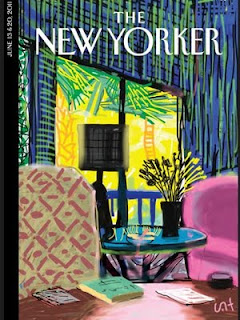
Marks in the Margin will join most Europeans and be on a holiday break (vacanze estive) for the rest of the summer. I hope you enjoy your summer and have a chance to read a good book or two.
Reflections on notable ideas
 Three days ago on the streets outside the apartment I am renting in Florence there were no longer any cars whizzing by. Indeed, barriers manned by the Carabinieri were set in place that prohibited cars, taxis, trucks, buses, scooters, and motorcycles from entering the area. It was strangely weird and so very quiet and it remains so. Something seems missing, as if everyone has fled the city.
Three days ago on the streets outside the apartment I am renting in Florence there were no longer any cars whizzing by. Indeed, barriers manned by the Carabinieri were set in place that prohibited cars, taxis, trucks, buses, scooters, and motorcycles from entering the area. It was strangely weird and so very quiet and it remains so. Something seems missing, as if everyone has fled the city. For years I taught and did research in experimental social psychology. In my day, the field emphasized the situational determinants of behavior, perhaps best exemplified by the studies of Stanley Milgram on obedience and disobedience to authority and Philip Zimbardo on behavior within simulated prisons.
For years I taught and did research in experimental social psychology. In my day, the field emphasized the situational determinants of behavior, perhaps best exemplified by the studies of Stanley Milgram on obedience and disobedience to authority and Philip Zimbardo on behavior within simulated prisons. It is the city itself—the city understood as a self; as a whole, a miraculously developed design. It is the city as what Italians call an insieme, an all-of-it-together. R.W.B. Lewis
It is the city itself—the city understood as a self; as a whole, a miraculously developed design. It is the city as what Italians call an insieme, an all-of-it-together. R.W.B. Lewis I’d like to invite you on a tour of an Italian retreat for writers, Santa Maddalena, located in the heart of Tuscany about a half-hour from Florence. It was the home of the writer Gregor Von Rezzori and his wife. When he died, she established the Santa Maddalena Foundation that offers visiting fellowships to four writers each year, as well supporting the Writers Festival described in my last two posts.
I’d like to invite you on a tour of an Italian retreat for writers, Santa Maddalena, located in the heart of Tuscany about a half-hour from Florence. It was the home of the writer Gregor Von Rezzori and his wife. When he died, she established the Santa Maddalena Foundation that offers visiting fellowships to four writers each year, as well supporting the Writers Festival described in my last two posts. Zadie Smith was the featured speaker (Lectio Magistralis) at the Writers Festival (Festival degli Scrittori) I attended in Florence the other day. It was an odd presentation as we were given a pamphlet of her talk upon arriving that I was halfway through as she began reading it, word-by-word.
Zadie Smith was the featured speaker (Lectio Magistralis) at the Writers Festival (Festival degli Scrittori) I attended in Florence the other day. It was an odd presentation as we were given a pamphlet of her talk upon arriving that I was halfway through as she began reading it, word-by-word.  I wanted to describe the world, because to live in an undescribed world was too lonely. Nicole Krauss
I wanted to describe the world, because to live in an undescribed world was too lonely. Nicole Krauss We live in an age when private life is being destroyed.
We live in an age when private life is being destroyed. I finally succumbed the other day and bought an e-reader—the iPad 2. It is my fourth (previously 1 Kindle and 2 iPads, each returned) attempt to come to terms with one of these gadgets.
I finally succumbed the other day and bought an e-reader—the iPad 2. It is my fourth (previously 1 Kindle and 2 iPads, each returned) attempt to come to terms with one of these gadgets.
 What is the difference between an original work of art and a copy? Can one put the same value on them? If not, why not? Does the distinction even matter? These are the questions initially raised in the movie Certified Copy and, on one interpretation the central theme of the film.
What is the difference between an original work of art and a copy? Can one put the same value on them? If not, why not? Does the distinction even matter? These are the questions initially raised in the movie Certified Copy and, on one interpretation the central theme of the film.